Editor’s Note: This text course is an edited transcript of a live webinar. Download supplemental course materials.
Erin Reichert: The learning objectives for this course are that you will be able to describe the physical characteristics and features of the Celebrate miniRITE hearing instrument. We also want to make sure that you are all able to explain how Frequency Transfer, which is a new feature, copies and compresses high-frequency input and lowers it to the lower-frequency region. Finally, we want to make sure you understand how the SoundLink app can make a difference with your patients connecting with an iPhone or an Android capability to control the Celebrate wireless hearing instruments.
Celebrating Everyday Conversations
There are many sophisticated features in the Celebrate. Part of Sonic’s 4S Foundation is that sound that is natural. There is no reason why sounds should sound mechanical in a hearing aid in today with advances in digital signal processing. It should sound natural. Our digital signal processor, called Speech Variable Processing (SVP), does exactly that.
Speech Variable Processing
SVP is rapid. It accurately measures the incoming signal and applies gain appropriately, but most importantly for the soft speech sounds, giving a complete signal to the hearing-impaired wearer.
The benefit of SVP is simple; make sound clear and natural. The important thing here is a variety of listening situations. Our patients 10 years ago were not as active as our patients today. They may have been living in an assisted care facility or a senior housing complex. Today, we have patients out golfing, hiking and biking. We are tapping into a younger population, but even our aging population is more active today than ever before. If you do not have a hearing instrument that can perform well in a variety of listening situations, what are you giving your patients?
SVP has three key components. First, speech is complex and dynamic. Second, you have to have speed. Amplification must be applied quickly to be correct. We believe in the cochlear amplifier model and with that, you have to be quick. Finally, you have to preserve. When you do not preserve frequency contrast, you lose clarity, and if you are not giving a hearing-impaired person clarity, you are giving them mumbled speech. It is imperative to have a device that can preserve frequency contrast.
Speech is consistently moving. That is how a healthy brain can determine what is speech and what is noise. Noise is fairly steady. Speech is consistently varying, and individual sounds are either long or short, and the amplitude can change dramatically quickly. The healthy cochlea is going to process this speech naturally. Again, our belief in the cochlear amplifier model is that the processing system has to be incredibly sophisticated to replicate speech accurately.
Figure 1 shows our tagline, “Every day sounds better.” The energy carriers in speech are vowels. As you see from the waveform in Figure 1, the “a” from every day has a ton of energy. But look at the tiny “s” from the beginning of sounds. It is such as small segment. If you do not get that /s/ signal, how is the brain supposed to figure out what you are saying? Thankfully, the human brain is impressive and takes a lot of contextual cues to piece things together. However, if your brain is always piecing and piecing, it is hard to keep up. The fact that speech is complex and dynamic is accurate, but you also have to have a system in place, like SVP, that can discern such mega-differences as rapidly as it can.
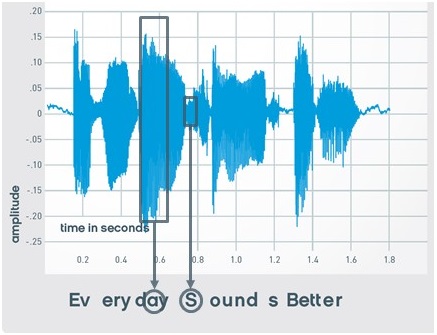
Figure 1. Speech waveform of “Every day sounds better.” Highlighted is the comparison of energy between the “a” vowel and the “s” consonant.
With regard to speed, it is important that the cochlea measures with incredible speed. It takes a look at the overall input of the incoming signal. It controls the amount of amplification: amplify when necessary and compress when necessary.
The following animation illustrates this point. This focuses on the speed of SVP. We are going to hone in on these three specific segments which are the /nd/, /s/, and /b/. You will see three colors in this animation. There is a gray signal coming in which is the original signal. The next color is orange, and that is what I refer to for today’s presentation as traditional amplification. Think of it as your multichannel system. The final color you will see is blue, which is Sonic’s SVP.
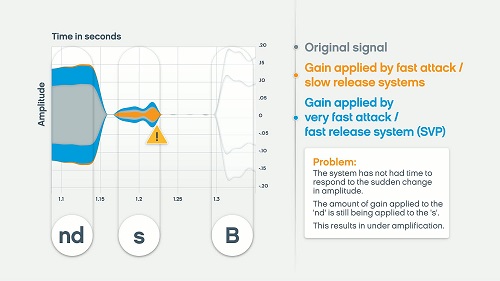
On the /nd/ signal, we have a problem. You can see that /nd/ is very different than the blue and yellow. That is a good thing, right? That /nd/ signal has a lot of energy, but needs more gain. That is why you can see the blue and the orange (SVP and traditional systems) are a long signal because we are coming off of the vowel. Enough time has lapsed that both systems are able to say, “This is how much this is. I will calculate this much gain and apply it.” You can see there that things are looking good because we are riding off of the energy from the vowel for both systems, the fast-attack slow-release and the Sonic fast-attack fast-release system.
Now we are going to go into the /s/ signal, which is a very small signal with a tiny little bit of energy. We have a problem. In the animation you can see the gray signal, but watch for the fast-attack slow-release. What happened is that the signal was attacked on the /s/, but because it is such a slow release to figure out the gain, it is under-amplified. What does that mean for the hearing-impaired user? They completely miss the /s/ sound. The fast-attack slow-release system did not release in enough time to provide the correct amount of amplification. If you go back and look at the SVP amplification (blue), you can see that amplification was applied, because we had the fast-attack fast-release. We are not going to miss that signal.
The next signal we are looking at is the /b/, and it has a lot of energy. This is something that we often ignore or overlook as hearing care professionals. Although the /b/ has a good bit of energy, it still needs some amplification based on this particular hearing loss. You can see the gray in the original, but then you see this massive amount of orange amplification. Because of the fast-attack slow-release, the system has not had time to change with the sudden change in amplitude. That hearing instrument is saying, “That /s/ was super soft. I bet I am going to need a ton of gain again.” It ramps up and gives a ton of amplification. Unfortunately, when you give too much amplification, the hearing aid user reports that it sounds sharp, shrill, unnatural, and booming.
However, if we look at the SVP, because we have the fast-attack fast-release, we are able to release from the /s/, attack the /b/, and release it quickly, giving us the correct amount of amplification for that /b/ signal.
This is why our customers say that things sound natural. Things sound like they used to sound. We cannot fix hearing, but we can do a good job of bringing back sounds that seem natural for that hearing-impaired wearer. The benefit with SVP is that we are not going to forget the little sounds and we are not going to over-amplify the big sounds.
Frequency Contrast
Frequency contrast is so important, yet as an industry, we do not spend a lot of time talking about it. The healthy cochlea preserves the natural level differences across frequencies at each phoneme. The difference across the frequencies is what we refer to as frequency contrast. Here at Sonic, we believe in straight talk. That is what we call the existence of the feature. Frequency contrast is critical for speech clarity. You must be able to maintain the frequency difference of similar phonemes to be able to tell them apart. The brain of a healthy hearing person can figure this out automatically, as it is hardwired to do so. This animation highlights the importance of frequency contrast.

You see the same three colors that you saw before. Gray is for the uncompressed linear signal on the /e/ phoneme. You can see a lot of peaks to valleys. The peak-to-valley ratio is the frequency contrast. My brain, with a healthy ear, is able to discern all of that frequency contrast.
Next we put in a multichannel traditional system. Unfortunately, what has happened is that the entire signal has been taken and divided up into little pieces. When we divide things up into little pieces, we take an average of an average. The problem is that the ratio between peaks and valleys is significantly flattened. Anyone who knows basic math understands that you calculate from raw data; you do not take an average of an average. When you take an average of an average, things smooth out. When things smooth out, you lose frequency specificity in terms of hearing.
The SVP maintains the peak-to-trough ratio. Because we are able to maintain that at such as rapid pace, we are able to preserve frequency contrast. What drives people into your doors is conversation. People want to connect and converse with others. You have to have a system that is sophisticated enough to be able to give them reconnection. In SVP, by preserving frequency contrast, we can do just that. They are going to hear the nuances of speech. We are not going to take the entire wide-band signal and divide it up into several pieces, sum them up and take an average. That is what traditional multichannel systems are doing. With SVP, we are taking a look at the entire signal as a whole. We have an incredibly rapid attack and release, and we have a rapid view on frequency contrast. These things work together to give people the ability to hear in a natural environment.
Do not fret over Frequency
Frequency Transfer is a new feature in the Celebrate launch. There are many names for this in the industry. Believing in straight talk, guess what frequency transfer does? It transfers the frequency. It copies and compresses the high-frequency input and transfers it to a lower frequency region that has better residual hearing. This has been a hot topic in the last few years. How we implement it is impressive, and the benefit is clear. It will improve access and audibility of speech cues, keeping the full bandwidth intact for seamless natural sound.
Some competitors will take a signal and squish it into a much smaller signal, reducing that full bandwidth and then flip it over. With our frequency contrast, we are going to preserve that bandwidth. We will take it and compress it slightly, then we are going to shift it. The great thing about our EXPRESSfit fitting software is that you can activate it however you want. You can turn on the strength that you want. If you want to change it to a different region, you can do that. As the hearing care provider, you are the expert. You know your patient. You know exactly what they are looking for in a hearing instrument, and we are giving you the tools to implement this at your fitting.
Figure 2 shows what the first fit looks like without Frequency Transfer and with Frequency Transfer.

Figure 2. First fitting without Frequency Transfer (left) and with Frequency Transfer (right).
This hearing loss without Frequency Transfer will completely miss the /s/ signal. When we engage Frequency Transfer, we are taking the signal and flipping it to the region where they can hear it. The days of missing signals are gone, and the SVP platform allows the changes to be made rapidly.
Let’s look at an animation with Frequency Transfer.

Frequency Transfer is available in our Celebrate technology. It is also available in another new product that we are releasing called Journey. We will have a course later on regarding Journey, but I did want to let you know that we do have a brand new spotlight article that is available on this technology on our website at www.sonici.com.
Speech Priority Noise Reduction
Speech Priority Noise Reduction monitors the input and determines the modulation fingerprint of the signal. Highly modulated signals are preserved because those are speech, and steady-state noise is attenuated. Unique to Sonic is that we extrapolate them differently. We separate speech versus noise. Most companies do not have a processor fast enough to discern what is speech and what is noise. In these cases, when you apply noise reduction, you attenuate everything. Speech Priority Noise Reduction analyzes that signal, preserves the highly modulated speech signal, and attenuates only the noise. When we do not give patients an instrument that can extrapolate speech versus noise, we are just making everything louder for them.
Very High
New in Celebrate is a feature called Very High. It is there to provide maximum attenuation of noise while still preserving speech. We recently demonstrated this at an industry meeting. As my colleague was doing this demonstration, I enjoyed watching the participants listen because the minute he would activate the Very High noise reduction, everyone’s eyebrows went up. They were impressed and surprised at how great they could still hear speech. It was not that all the noise went away but that speech was preserved. In Celebrate, this high setting for Speech Priority Noise Reduction makes a remarkable difference to people who get the opportunity to wear this technology.
Noise Management
We live in a noisy world. The second part of our 4S Foundation is speech understanding in noise. If you cannot hear speech in noise, you cannot be comfortable in a hearing aid. We employ something called Impulse Noise Reduction. Impulse in a hearing aid a sharp peak or sudden change in intensity. It is quick and often very loud.
Impulse Noise Reduction
These sounds are reduced using basic fast-acting output compression. The benefit here is improved listening comfort. The Impulse Noise Reduction does a good job of clipping impulsive signals, such as dishes clanking, whistles blowing or dogs barking, so they are not offensive. Your patient will still understand that those sounds are loud, but they are not going to want to pull their hearing aids off of their head.
Soft Noise Reduction
This is something that goes back to the Sonic of old. Soft Noise Reduction is implemented via expansion. Expansion can be thought of as the opposite of compression. Soft Noise Reduction uses expansion to manage the gain for low-level sounds, but still maintains the gain for speech. We are not going to sacrifice speech. The benefit is very easy to understand. It is reducing distracting low-level noise in that environment. No one wants to hear a fan running or an HVAC system turning on and off or the microwave humming along. When you have an amplifier, it will amplify all of the signal, unless you have a sophisticated hearing instrument able to manage that soft noise without disrupting speech.
Wind Noise Reduction
Wind is a negative experience with a hearing instrument. The woman who watches my daughter has a severe hearing loss. Wind is something that has bothered her for ages with various hearing instruments. I had her try the 100 level technology, and the smile on her face the first time she experienced wearing the 100 level Sonic hearing aids on a windy day was tremendous. She had a grin and said, “I heard everything all day! I could hear your daughter talking. I could engage in communication, but it was not aggressively noisy.”
If you have a sophisticated system able to manage the noise, monitoring for uncorrelated wind and the noise between the microphones, your patient will have complete relief. They will not be distracted. What can they do if they are not distracted? They can focus on the speech.
Feedback
It is 2015, and no one should walk around with a hearing instrument that is whistling. The adaptive feedback canceller in the Sonic technology uses phase cancellation and a feedback monitor. It is a memory component to remove feedback before it even exists. When the signal comes in, the chip will say, “You have been here before. You are feedback. I am going to invert you instantly.” If the signal comes in with no feedback, it goes through the regular process for amplification.
Some competitors’ adaptive feedback cancellers amplify out to 1500 or 1700 Hz and then drop the gain significantly from there. You may not get a squeal from that hearing instrument, but as an audiologist, I am worried about where the speech amplification is. If I am seeing a drop in gain because it is trying to maintain and hold the feedback, that is a problem. Our adaptive canceller does not sacrifice gain.
Reverb Reduction
Another new feature is Reverb Reduction. It will minimize the amount of reverberation that is amplified by attenuating part of the signal that is reverberant. The full signal is an unattacked signal with a reverberant component. Keeping some of that is what makes sound natural and full. When you have too much reverberation, things get muddled. When you have too little, things sound thin. The benefit here is listening comfort in demanding listening environments.
Figure 3 shows two different reverberation curves. The blue line is a living room. Many living rooms have carpet, walls, maybe windows, a regular ceiling, and some furniture. There are lots of things to absorb the reverberation. That is why things sound very natural and comfortable when sitting in that type of environment. The reverb time in this environment is dramatically lower. The darker line in Figure3 is a place of worship. Many patients tell us they cannot hear at their place of worship because there is so much noise. This reverberation in an environment with hard floors, walls and seats can be a problem.
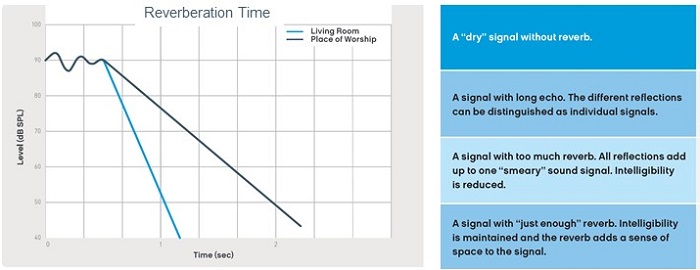
Figure 3. Comparison of reverberation time for a living room (light blue) and a place of worship (dark gray) and visual representations of reverberation.
On the right side of Figure 3, you see a dry signal, as shown with our logo, without any reverberation. You can see that it is clear, but is a little thin. One step down is a signal with a long echo. You can see the different reflections. All of the different signals are somewhat distorted. The next line is a signal with too much reverberation. All of the reflections add up to one smeared signal. Unfortunately, this equates to reduced intelligibility. Think of this as taking off your glasses where everything is blurry. The final step is just enough reverb. You can see it is a bolder, fuller logo from a visual perspective. Just the right amount of reverb is essential to give the adequate space of the signal.
Figure 4 shows Reverb Reduction in action. The first signal is shown with Reverb Reduction off and the second signal has it on. When there is no reduction, the reverberation (pink) can overwhelm the speech signal of “Every day sounds better.” When we engage Reverb Reduction (right panel), you can see that a little bit remains, because we want the fullness of speech, but we do not want it to be overwhelming, overcompensating, over-amplifying, or overtaking the speech signal. This is hugely important when you go to any type of noisy environment, which is why we employ this as a noise management system

Figure 4. Reverb Reduction off (left panel) compared to Reverb Reduction on (right). The reverberation is shown in pink with the cleaned signal shown in blue.
The Balance of Binaural
Binaural environment classification is available in our wireless models and will provide a hands-free, unified listening experience. The hearing instrument works at the microphones and talks to the chip, and the two ears will talk to each other for every environment except for wind, which is a smart idea. Think about your patient who is driving down the road and they roll down their window. In that case, we want the left instrument to optimize for wind, but maybe we want the right instrument to hear speech in noise. That is the only time the hearing aids will stay separate. We put environment classification to work. We are consistently monitoring the environment because we want to maximize speech intelligibility.
With binaural synchronization, changes to the program in one ear will also occur in the other. Two ears simultaneously work together. The non-telephone ear control will recognize the non-telephone ear and reduce the gain or mute the opposite side. If I have a phone on my left ear, my left ear is going to tell my right ear that I am on the phone and asks what you want to do. You configure this in EXPRESSfit. If you decrease the gain or mute the device, you are going to reduce the environmental distraction, therefore increasing the perception of volume on that telephone ear.
Premium-Level Features
Speech Priority Volume Control
Speech Priority Volume Control (SPVC) is a new feature available in the premium-level technology. It will prioritize volume adjustments for speech. When you put a hearing aid on someone with a volume control and they turn up the volume, what does it do? Unfortunately, it increases the gain globally; it turns everything up, including the noise. When you turn the hearing instrument down, it turns everything down, including speech. That is a problem.
SPVC focuses more on the volume of the speech regions, and employs less increase to the outliers, or the very low and very high frequencies. In essence, there will be more attenuation made to the lows and the highs and less attenuation in the speech region. This is going to give better sound quality.
Airplane Environment
A new program available in the Celebrate 100 technology is designed for in-flight challenges of ongoing noise. It features the highest level of noise reduction with optimized directionality in high-input level compression. Speech sounds are going to remain intact so you can have a conversation during flight.
When you are parked and taxiing on the runway, the place is not that noisy. However, as soon as you are airborne, everyone puts on noise cancelling headphones; it is a loud experience. Now you can provide comfort on a flight for your patients so they can attenuate that noise, yet still preserve speech. This means they can have a conversation with the person sitting next to them or engage when the flight attendant asks a question.
Full Customization
With Full Customization, clinicians are able to customize the program in Celebrate for any environment. This is a great feature when you want to provide a custom program for one very specific listening environment.
Connectivity
We are proud to release SoundGate 3 (Figure 5). It is the hub of connectivity accessories. It connects to virtually any Bluetooth-enabled product. It has excellent battery life and makes program and volume changes. SoundGate 3 works with our SoundLink app available for iPhone and Android smart phones. The app allows you to view different Bluetooth sources in range. You can look at the battery status on the SoundGate. You can change the volume and programs in the hearing instrument. You can change the listening source. You can create and name specific programs. When everyone is at dinner looking at their phones and doing different things, now your patients can look at their phones and manipulate their hearing aid and no one would be the wiser.
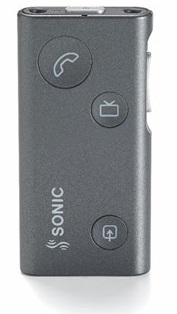
Figure 5. SoundGate 3.
The SoundGate mic is our personal, private connection with SoundGate 3 (Figure 6). It can clip on to your conversational partner in any environment – business, meeting, lecture, restaurant, et cetera. It will communicate directly via the SoundGate 3 to the hearing instruments. It is lightweight and discrete.
Next, we have a new small remote control called RC-N. It allows the user to increase and decrease volume and change the programs. It has very visible buttons and is a tremendous step up from our previous remote control. This is a great option for patients that are not interested in Bluetooth connectivity, but still want remote access to manipulate their hearing aids.
To give professionals hassle-free fittings, we are pleased to introduce the FittingLINK, which is a wireless programmer. This will program any of our wireless instruments, including backwards-compatible devices. We also have Real Ear Fit, which is incorporated into EXPRESSfit. If you have any questions about Real Ear Fit, call our audiology support line. They are experts in this and would love to walk you through it.
Celebrate Product Family
The model overview in Figure 6 is divided into specific categories: invisible in the canal (IIC), completely in the canal (CIC), in the canal (ITC), in the ear (ITE), mini behind the ear (BTE), and the new mini receiver in the ear (RITE). The things with circles around them are new features. You can now get a CIC wireless with the Celebrate 100 and Celebrate 80.

Figure 6. Celebrate product family overview.
miniRITE
We live in a world that loves the RITE feature. The new miniRITE is smaller than any of our other RITE products. It uses a 312 battery and goes along with our miniFit design, which has new receivers and domes. We also offer the ability for custom molds, whether it is a light tip or a specific mold to the style that you desire. There are six hair color options available.
There are three different receiver options offered: a 60, 85, and 100 speaker. Those numbers correspond to the dB HL fitting range. For the 60 speaker, your matrix is 109/48 dB, all the way up to the 100 speaker, which is 123/65 dB. That is a lot of power coming out of a RITE speaker.
miniBTE
We are also excited to introduce the Celebrate into the mini BTE design. It is available in an ear hook or thin tube configurations (Figure 7). This uses the same miniFit domes as the miniRITE. There are four thin-tube lengths available: 0, 1, 2, and 3. The same domes that are available in the RITE product are available here as well: the open, bass double vent, bass single vent, and power. For miniBTE acoustic performance, your matrix there is a 125/58 dB.
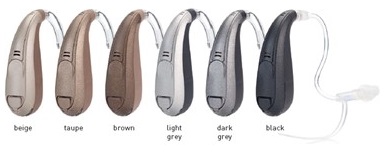
Figure 7. miniBTE color line with ear hooks and thin tube.
Custom Products
We have continued excellence making small, cosmetically appealing devices. We have best-in-class microphone and receiver protections with our O caps and T caps, as well as our ProWax.
We have four new models in the Celebration family, including the CICW, CICPW and now the ITC and ITCW (Figure 8). The yellow arrows on the ITCPDW, ITED, and ITEPDW indicate more gain and more output in these instruments that in our previous technology.
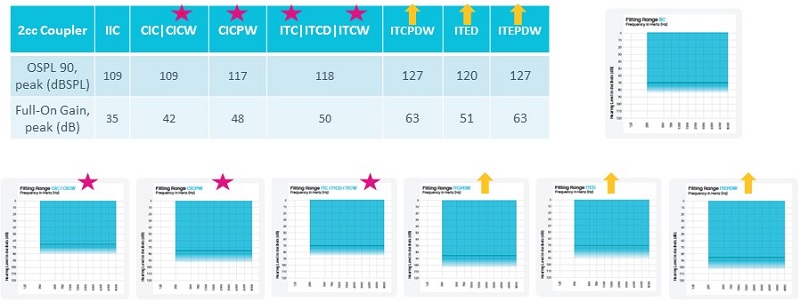
Figure 8. Celebrate custom family acoustic performance.
Summary
Just to summarize, Celebrate is packed full of features. We have a nice offering down into the 80 level technology with 10 kHz frequency bandwidth. We have the Speech Priority Noise Reduction. On the 100 level, we have that very high noise reduction as well as the Impulse noise reduction and Reverb Reduction, which are premium features that separate the 80 level from the 100 level.
The SPVC focuses on the speech region when you turn the hearing aid up. That is a premium 100 level feature. The programming capabilities of airplane and custom program are 100 level features.
There are 14 environments from which to choose with the Celebrate 80. Wireless programming is available on both instruments, because we do have wireless connectivity in both the 80 and 100 level technologies. There are typical patient convenience features with push button mute, audible indicators, and everything you desire in a hearing instrument.
Something that was not shown in this presentation is a new algorithm called Best Fit Fast SE (BFFSE). That is specifically designed for patients who want more gain. We have great model offerings and lots of flexibility within the EXPRESSfit fitting system and excellent support from our sales and audiology teams. Celebrate gives you more everyday reasons to smile. Thanks for your time and attention today. For more information, please visit www.sonici.us
Cite this Content as:
Reichert, E. (2015, July). Introducing Celebrate: more everyday surprises. AudiologyOnline, Article 14478. Retrieved from https://www.audiologyonline.com


